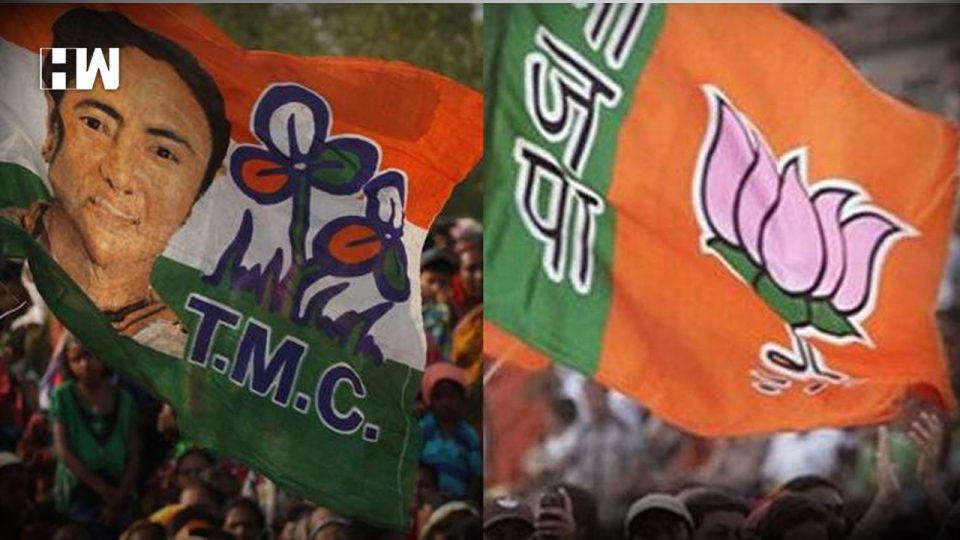Kolkata | Politics dominated the year 2018 in West Bengal which saw an increasing tussle between the ruling Trinamool Congress and the BJP, main opposition parties the Congress and the CPI(M) taking a back seat, violence during panchayat polls and communal clashes.
Panic over a carcass meat racket in April-May prompted the Mamata Banerjee government to form a high-powered committee for keeping a check on such malpractice.
The BJP pipped the Congress and the CPI(M) to emerge as the main challenger to the ruling TMC.
The state not only witnessed bipolar politics between the TMC and the BJP but also sharp communal polarisation.
Both the TMC and the BJP feel that results in parliamentary polls in Bengal, which has a total of 42 seats, will play a major role in the post-poll scenario.
“We will win a maximum number of seats from Bengal. We will not win less than 26 seats from Bengal. This will help us in increasing our tally nationally,” claimed BJP state president Dilip Ghosh.
TMC national spokesperson and Rajya Sabha member Derek O’ Brien countered saying his party will play a major role in the 2019 polls.
“We will win a maximum number of seats from Bengal. The people of Bengal are with the TMC and that has been proved in all the by-elections and rural polls where the party had won hands down,” TMC secretary-general Partha Chatterjee said.
Apart from the fast changing political narrative, the state also witnessed one of the worst communal violence in Asansol area of West Burdwan district over Ram Navami rallies in March-April.
As the year drew to a close, the issue of giving permission to BJP’s rath yatra, covering all the 42 Lok Sabha constituencies, remained in focus with the saffron party accusing the TMC of being “undemocratic and autocratic” by denying the nod.
The TMC maintained that the Rath yatra was aimed at creating communal polarisation in the state.
The BJP, which has been making steady inroads in the state since the 2016 assembly polls, surprised everyone and cemented its position as main challenger of the TMC by increasing its vote share by leaps and bounds in all the by-elections that have been held across the state in last one year and also the three-tier panchayat polls.
The panchayat polls of May will go done in the history of Bengal politics as one of the most violent elections that the state witnessed since the inception of Panchayat Raj in 1978.
Even though the TMC won the polls by bagging nearly 85 percent of the rural seats, it couldn’t breathe easy over the BJP making inroads in the Junglemahal districts of Purulia, Jhargram, Bankura and West Midnapore.
The unease could be easily sensed in the ruling camp as it shunted out two ministers who hailed from those areas for alleged underperformance.
Buoyed by the BJP’s performance in the rural polls where it won more than 7,000 seats in the panchayats, party chief Amit Shah has set a target of winning at least 22 of 42 Lok Sabha seats in the state.
The killing of BJP workers in post-panchayat poll violence in areas where the party had performed well drew the ire of its central leadership, which not only launched a countrywide stir against the TMC government but also organised several rallies and programmes by top leaders, who vowed to oust Banerjee in the next elections.
The TMC countered, accusing the BJP of spreading the poison of communalism across the state as party supremo Banerjee toured the country and met leaders of various opposition parties in a bid to put up a united fight against the BJP in the next Lok Sabha polls.
She floated the idea of a federal front of regional parties and proposed one-to-one fight against the BJP across the country to ensure maximum polling of anti-BJP votes.
The TMC in a bid to showcase the unity of the opposition front called for a rally of opposition parties on January 19.
It, however, has ruled out any possibility of an alliance with the Congress in Bengal by repeatedly stating its desire to contest in all the 42 Lok Sabha seats of the state.
On the opposition front, the West Bengal Congress unit witnessed a change of guard with old horse Somen Mitra being brought back as state party chief, replacing Adhir Ranjan Chowdhury, a bitter critic of TMC.
The CPI(M)-led Left Front, on the other hand, continued to erode both politically and electorally as its vote share continued to slide in all the elections that took place during the year.
Both the Left Front and the CPI(M) seem to be in a dilemma over the issue of alliance with the Congress in the state. The Left Front allies such as Forward Bloc and RSP had threatened to quit the front if it decides to go ahead with the alliance or understanding with the Congress.
With the BJP projecting the TMC as a party “working for only Muslims”, the latter tried to woo the majority community by organising various programs such as Hanuman Jayanti, Purohit Sammelan and doled out funds to clubs organising Durga Pujas in the state.
As an independent media platform, we do not take advertisements from governments and corporate houses. It is you, our readers, who have supported us on our journey to do honest and unbiased journalism. Please contribute, so that we can continue to do the same in future.

